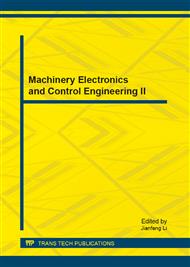p.82
p.86
p.89
p.93
p.98
p.103
p.108
p.112
p.117
Tensile and Compressive Creep Behavior of Magnesium Alloy AZ91D
Abstract:
Tensile and compressive creep tests of the extruded magnesium alloy AZ91D were carried out in vacuum at 150°C under constant engineering stresses ranged from 60 to 150 MPa. From the test results, the secondary creep rate in tension was found to be significantly higher than that in compression. Moreover, the estimation method of creep curve under a constant true stress was proposed by considering the reduction of cross sectional area during tensile loading where the specimen cross-sectional area and length were measured periodically until the end of creep test. The creep curve under a constant true stress obtained in the present study was still different between tensile and compressive loadings. Therefore, it should be noted that the different creep curves and creep exponents should be used in the creep deformation analysis of structures.
Info:
Periodical:
Pages:
98-102
Citation:
Online since:
March 2013
Price:
Сopyright:
© 2013 Trans Tech Publications Ltd. All Rights Reserved
Share:
Citation:


